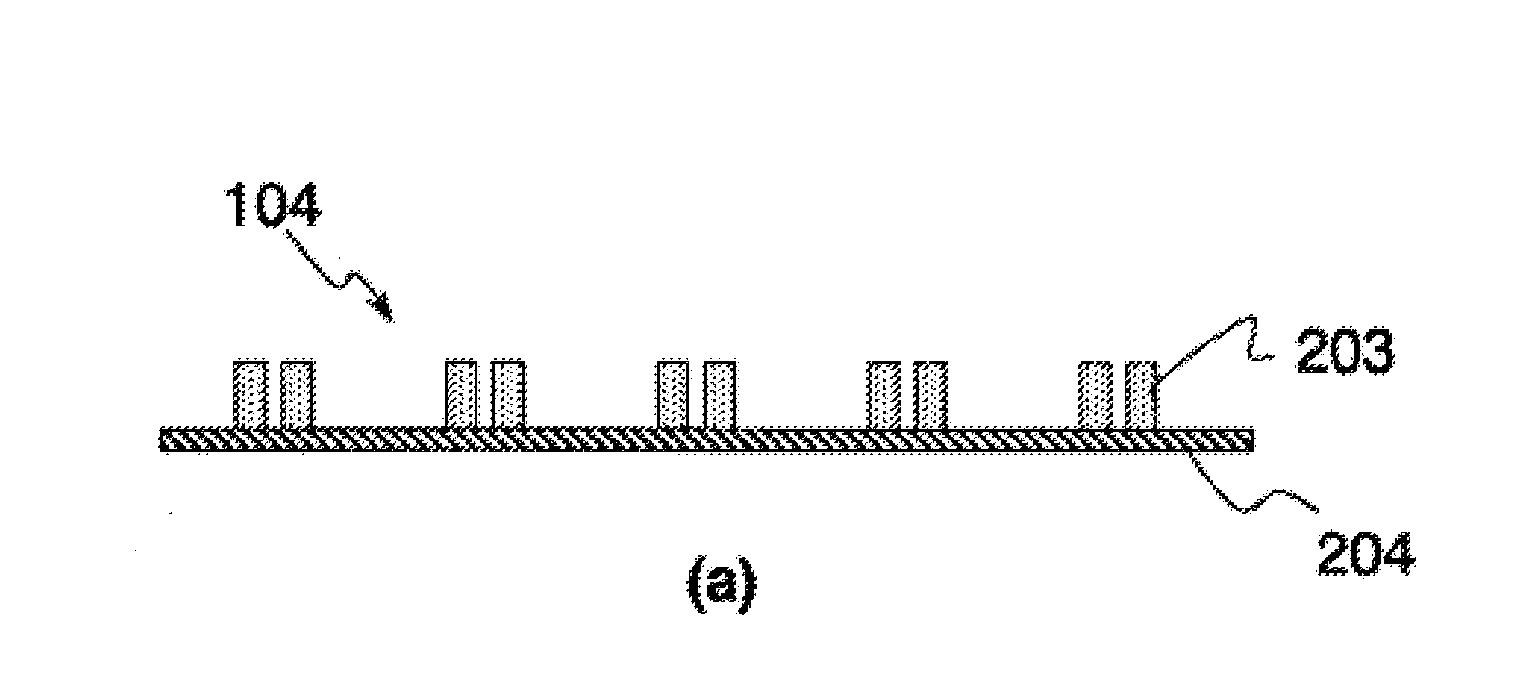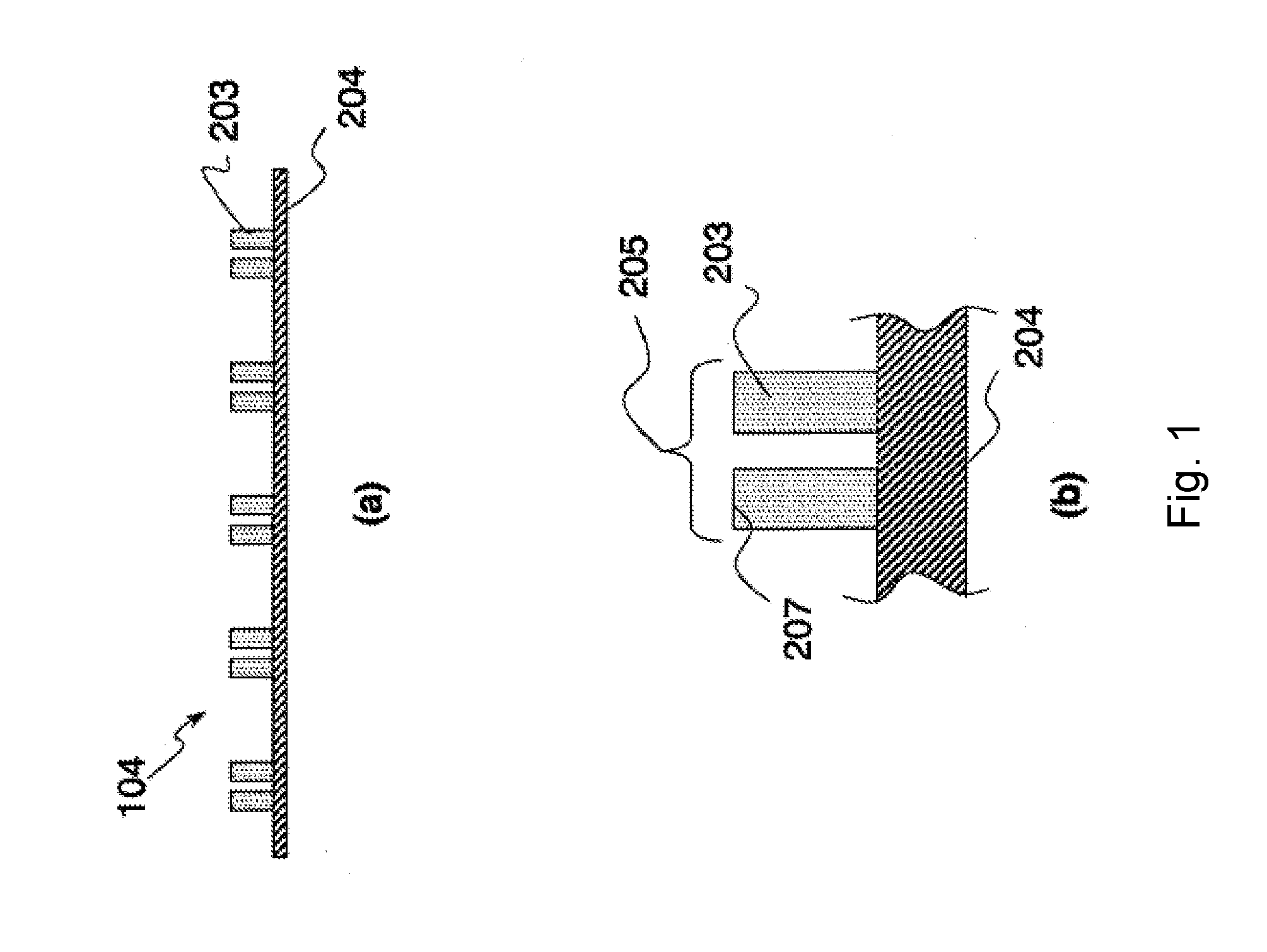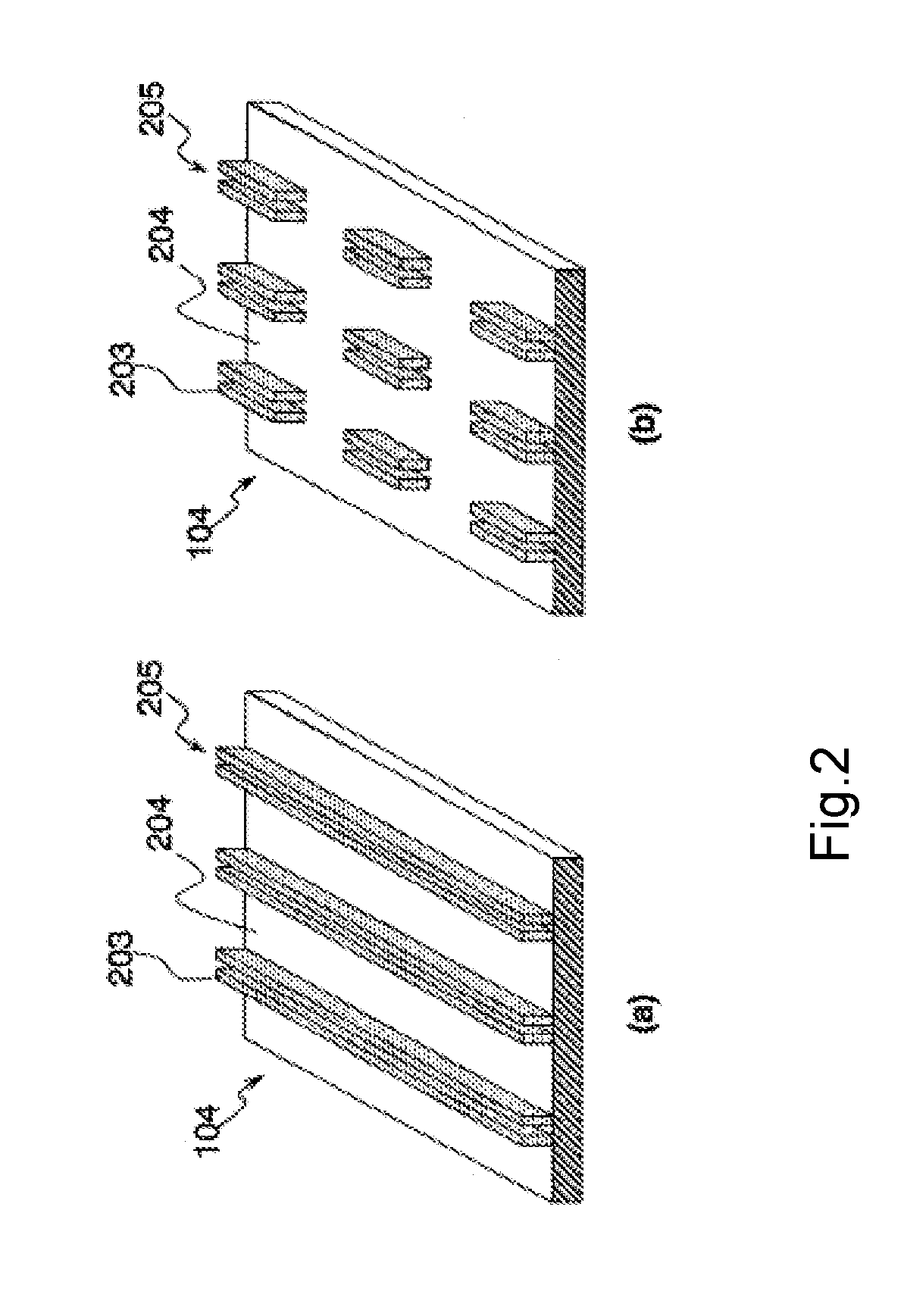Relief printing plate and method for producing organic el device using the same
a printing plate and relief technology, applied in the manufacture of electrode systems, cold cathode manufacturing, electric discharge tube/lamp manufacture, etc., can solve the problems of lack of linearity of pattern shape thus formed, difficulty in maintaining pattern accuracy of mask, and difficulty in using patterning or coating colors distinctly. , to achieve the effect of not being uneven
- Summary
- Abstract
- Description
- Claims
- Application Information
AI Technical Summary
Benefits of technology
Problems solved by technology
Method used
Image
Examples
example
Example 1
Production of Photosensitive Resin Relief Printing Plate 104
[0115]A 42 nickel material having a thickness of 250 μm was used as a substrate 204, and an acrylic binder resin solution having a black pigment kneaded therein was coated on the substrate 204 to make a dry thickness of 10 μm, followed by drying, thereby forming an antireflection layer.
[0116]A photosensitive resin composition formed by kneading a water soluble polyamide as a major component, dipentaerythritol hexakisacrylate as a radical polymerizable monomer and 2,2-dimethoxy-1,2-diphenylethan-1-one (produced by Ciba Specialty Chemicals Co., Ltd.) as a photopolymerization initiator was melt-coated on the surface of the substrate 204 to make a total thickness of the plate of 310 μm, thereby producing a photosensitive resin layer, on which a polyethylene terephthalate film (thickness: 125 μm, produced by Teij in DuPont Films Japan Ltd.) having a polyvinyl alcohol solution coated thereon to make a dry thickness of 1 ...
example 2
[0124]In Example 2, a device was produced in the same manner as in Example 1 except that the relief pattern 203 thus produced had a width of 25 two relief patterns were formed with a distance of 10 μm to form a relief pattern group 205 having a width of 60 the pixel size was 80 μm×150 μm, the organic light emitting inks used had a viscosity of 120 mPa·s, and 20 substrates were continuously printed in the printing process.
PUM
 Login to View More
Login to View More Abstract
Description
Claims
Application Information
 Login to View More
Login to View More - R&D
- Intellectual Property
- Life Sciences
- Materials
- Tech Scout
- Unparalleled Data Quality
- Higher Quality Content
- 60% Fewer Hallucinations
Browse by: Latest US Patents, China's latest patents, Technical Efficacy Thesaurus, Application Domain, Technology Topic, Popular Technical Reports.
© 2025 PatSnap. All rights reserved.Legal|Privacy policy|Modern Slavery Act Transparency Statement|Sitemap|About US| Contact US: help@patsnap.com



